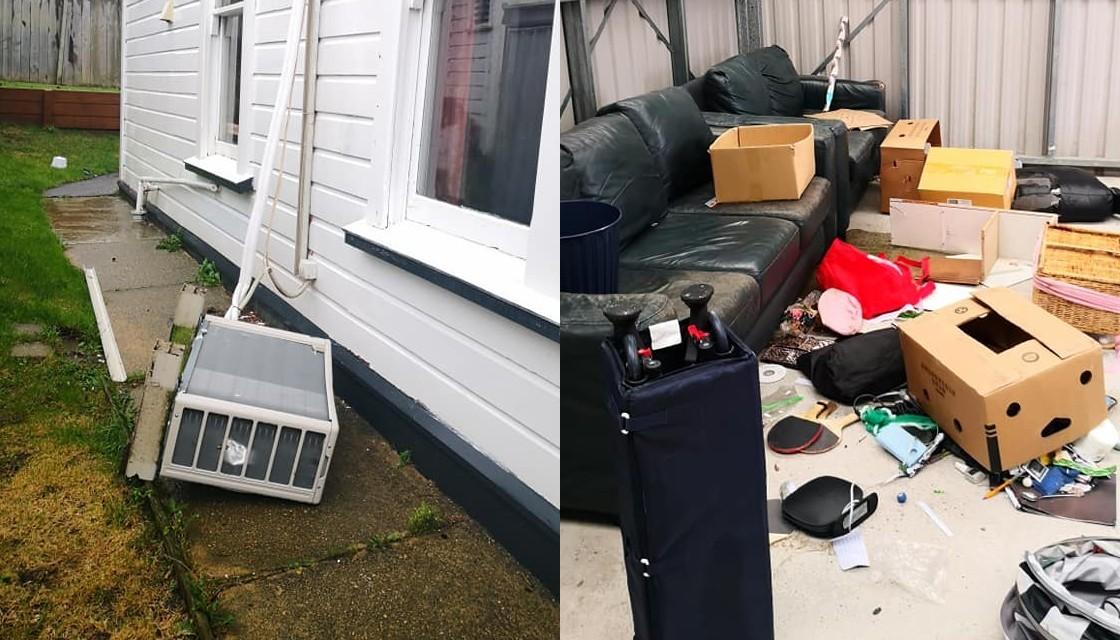
After being embroiled in a tenancy dispute leaving her $6000 out of pocket, a landlord is warning others to follow tenancy rules - and to understand whether their insurance covers intentional tenant damage.
Referring to the dispute as a "massive learning moment", the landlord, who wished not to be named, owns a rental property in Dunedin.
The issues started after the landlord took the tenant (the leaseholder named on the Tenancy Agreement), to the Tenancy Tribunal for seven weeks' unpaid rent, a total of $3500. Tenancy Tribunal ruled that the tenant repay the arrears at $30 per week, out of her benefit. The bond of $1000 was refunded to the landlord.
After the hearing, the tenant, who had a flatmate who wished to stay on, moved out.
The flatmate told the landlord she knew nothing about the unpaid rent and had been paying her share to the ex-tenant. Having contacted the flatmate's manager, who gave a positive reference, the landlord verbally agreed to let her take over the tenancy, and to her bringing in two new flatmates to help cover the rent.
While flatmates were found, the landlord negotiated with the new tenant to do repairs on the house in lieu of rent, but none of the work was done. The tenant owed the equivalent of three weeks' rent.
"I didn't have a signed lease agreement in-place, just a verbal one...this is when she started threatening to burn the house down and destroy me," the landlord said.
If rent is overdue by 21 days or more (or if a tenant doesn't remedy unpaid rent), Steve Watson, national manager, tenancy compliance and investigations said landlords can apply to the Tenancy Tribunal for eviction. If it's less than 21 days in arrears, landlords can send the tenant a written notice to remedy.
After a further week went by with rent unpaid, the landlord sent the tenant a message saying the locks would be changed four days' later. She also went to the property and explained to the new flatmates that no rent had been paid by the tenant and they vacated the property.
"I rang the tenancy people and they said even though I didn't have a written agreement in place I had a verbal one and so I had to follow the proper process...I didn't do that," the landlord explained.
The former tenant, who had left her belongings, including a moveable scaffolding unit in the garage, asked the landlord for another week to move it out. As the goods had been stored at the property for over 35 days, the landlord told her now ex-tenant a charity was coming to collect what they wanted, hoping that would encourage her to get her things.
The landlord took the scaffolding unit, "the one thing in the garage worth anything" and put it in the house.
"That's when things really kicked off with the death threats and abuse. That night is when [the new tenant] trashed the heat pump unit and made all the mess and then broke into the house and stole the scaffolding ladder back," the landlord said.
The landlord went to her insurance company, State, hoping to receive compensation for the damage, only to find her claim declined.
"With the insurance company declining the claim and the police saying they don't have enough evidence to prosecute [the tenant] for it (which seems absurd to me), I'm now out of pocket over $7000 ($6000 after the bond)," the landlord said.
A spokesperson for IAG New Zealand Limited, which owns State, said due to privacy, the company is unable to comment on specific customer circumstances. However, State home comprehensive policies exclude intentional tenant damage.
The policy only covers intentional damage where there is a loss caused by fire, explosion or methamphetamine contamination (to specified limits). Intentional tenant damage is covered under State's landlord insurance policy.
"State Landlord Insurance covers intentional acts, vandalism or theft by tenants for up to $10,000 per event for contents (this can be extended up to up to $25,000)," the spokesperson said.
A spokesperson for another general insurer, AA Insurance, said it has an optional benefit called 'extended landlord cover' which covers landlords for up to $20,000 for loss to the rental home for malicious damage, theft and vandalism. It decides on a case-by-case basis whether damage is accidental or intentional (malicious).
"For example, a single hole in the wall would likely be accidental damage, whereas if a tenant has graffitied on the living room wall, we would more likely view that as malicious damage," an AA Insurance spokesperson said.
Steve Watson, national manager, tenancy compliance and investigations said as long as the landlord can prove the damage isn't fair wear and tear, "tenants are responsible for both intentional and careless damage in a rental property".
"If damage caused by the tenant is substantial, landlords can apply to the Tenancy Tribunal without serving a 14-day notice to remedy first," Watson said.
He said there are rules landlords must follow when dealing with abandoned goods after tenants have left. Landlords are required to try to get in touch with the tenant and give them a reasonable amount of time to collect them.
If they can't be contacted, or goods aren't collected, landlords can apply to the Tenancy Tribunal or, after 35 days, can decide whether to store, dispose of or sell them.


